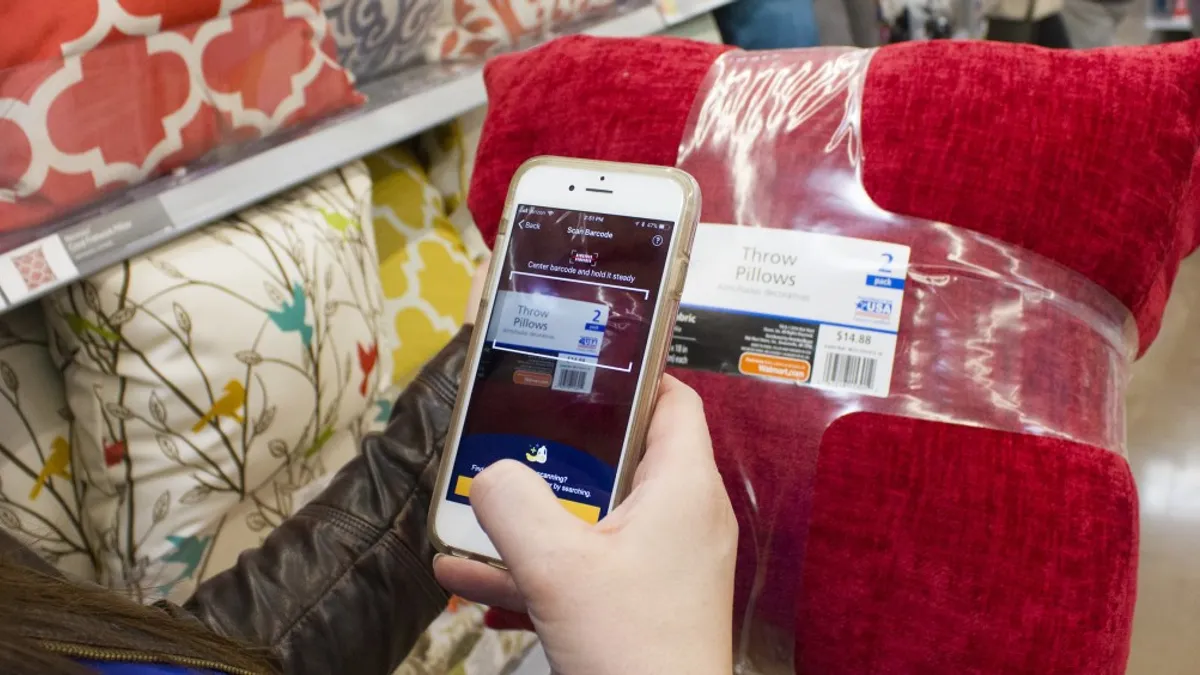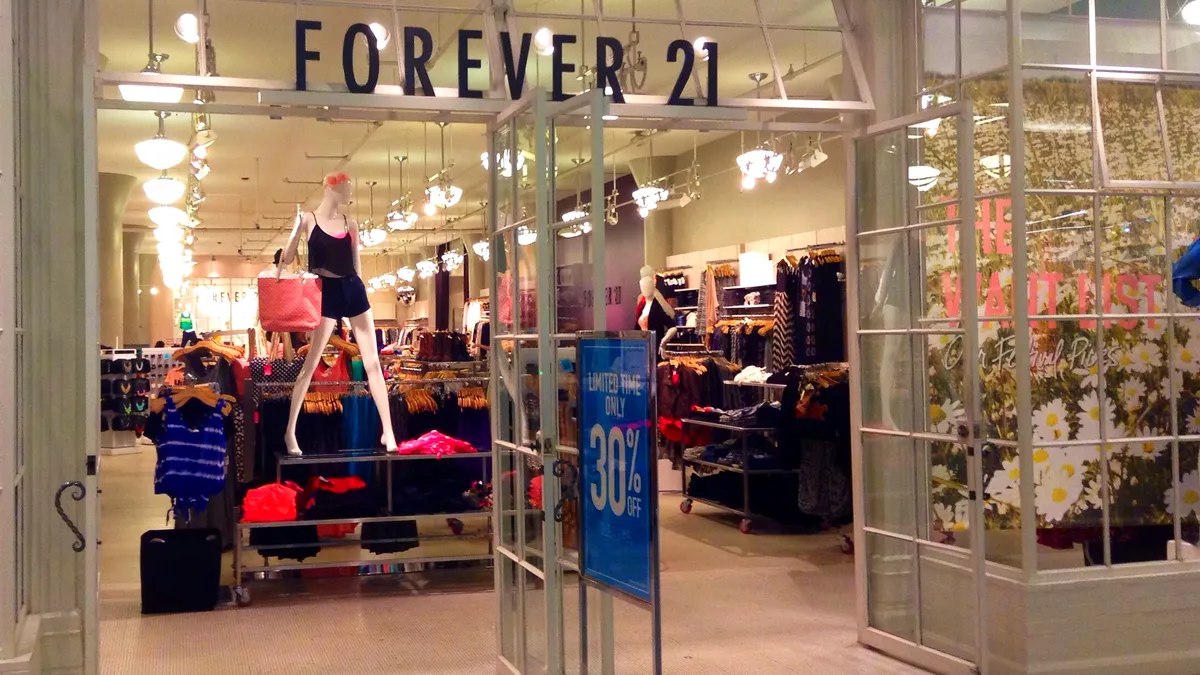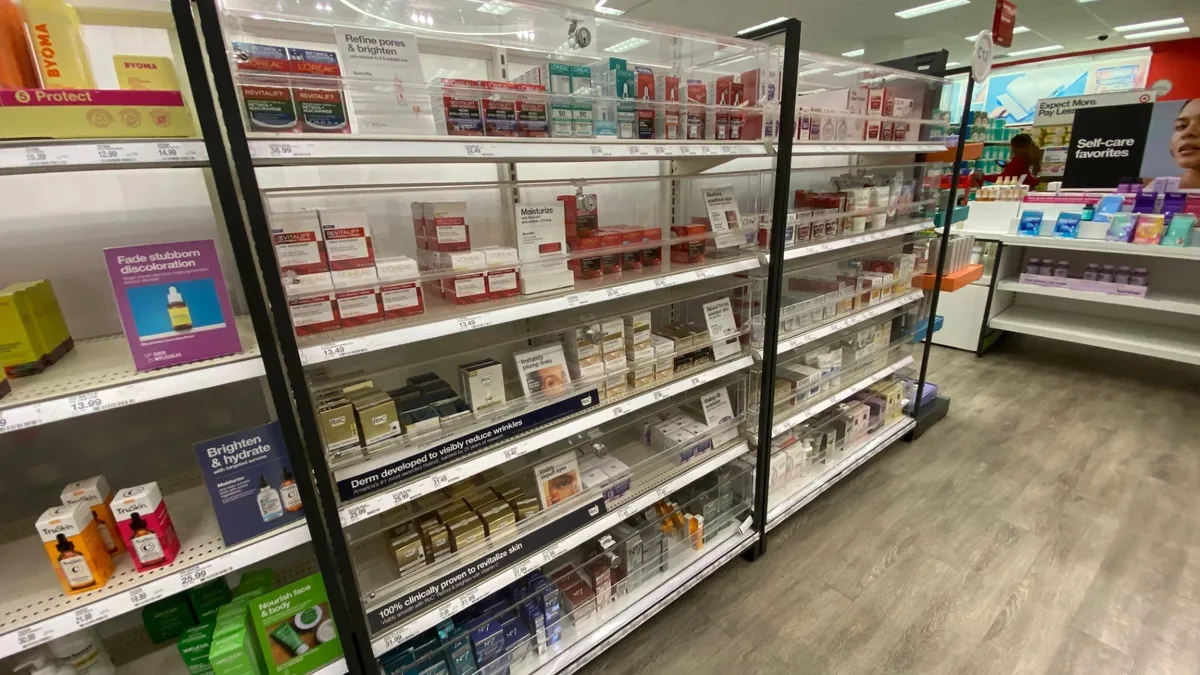When Farfetch executives began to think about the store of the future, they didn't start with technology, they started with what they know about the modern luxury consumer.
Roughly 70% of affluent shoppers research online first and nearly 90% of shopping still happens in stores. That number will drop to 75% by 2025. And about 80% of shoppers are willing to share data with companies they trust.
For Sandrine Deveaux, managing director of store of the future at Farfetch, these statistics speak to four themes to consider from the customer standpoint: experience, personalization, ease and gratification. For Farfetch's store of the future, frictionless payments enabled by smartphones sits at the core of getting those four things right — but Deveaux admits, it's not easy.
"I'm not going to lie [advanced payments are] complicated. This is our biggest pain point," she said during a presentation at ShopTalk in March. "This is not only the biggest pain point of Farfetch, but of retail."
Frictionless payments in the store of the future aren't just for a luxury retailer store lab — they're an imperative for all of retail. And more executives can be seen committing to that future in the investments that nearly all major retailers are making in mobile scan-and-go and checkout-free programs.
In the evolution of connected payments, Tom Gehani, director of client strategy and research at L2, told Retail Dive that retailers have graduated from geofencing and beacons — two methods that have been largely unreliable — and are focusing their frictionless payment efforts on scan-and-go with a select few having moved on to more advanced concepts like just walk out technology.
But that's merely the tip of the iceberg.
Scan-and-go
The clear winner in scan-and-go is Apple — but Target, Walmart and Kohl's will all start to catch up, Gehani said. Generally, he added, it's the way that all big-box retailers want to go.
"A lot of conversation has been [about how] this will be a cost saving because of fewer cashiers," he said. "Retailers that will win are going to take labor savings and put that to other store labor, like ensuring security, [that the] shelves are full at all given times and helping customers on the floor."
Mobile checkout shouldn't spur a reduction in total store labor, but rather a shift toward other activities. And implementing such a program isn't to say that cashiers suddenly disappear. Retailers will win, not by removing associations, but by creating better ones, Gehani said.
Solutions providers are beginning to flood the space as interest from large companies builds; MishiPay, Datalogic, Scandit and Selfiecart are just a few of the largest today.
Macy's recently became one of the latest major retailers to roll out a mobile scan-and-go option to its stores. Phones are the entry point to the brand now, CEO Jeff Gennette said at ShopTalk, and personalization will be a big part of the way forward.
But the Macy's model is not without kinks — in order to keep ahold of shrinkage problems, customers still have to wait in line to have a store associate remove security tags and show their receipt. "The incremental friction won't make for a better customer experience overall," Gehani said.
Other retailers, like Walmart for example, are arming associates with mobile devices so they can check customers out in the aisle. Walmart is using a Check Out With Me feature in hundreds of lawn and garden centers, so that customers don't have to lug large pots, soil and other foliage into the store just to head right back outside. This type of service is also conscious of shoppers that may not have smart phones, or may have left them at home.
Brendan Miller, a Forrester analyst, is getting more inquiries than ever from retailers interested in scan-and-go to boost engagement with a mobile app while customers are in the store. "The tech is widely available, the retailer doesn't really have to implement a lot of in-store technology to make that work," he told Retail Dive. "The big issue that comes up is operational. If we have people skipping checkout lanes, how do we control security? How do we control loss prevention?"
These are all questions that have to be addressed, and they're worth it to the customer, considering that scan-and-go compels higher customer satisfaction than self checkout, which Miller says has reached its peak.
But what if you didn't have to scan anything? What if you could just walk out?
Just walk out
That's the bet Amazon Go made in December 2016 with the first announcement of a test for a checkout-free store featuring "just walk out technology." But fraught with tech delays, many in the industry laughed at Amazon's apparent blunder. But when the store finally opened to the public with fair media buzz and high customer satisfaction, people began to wonder if this was the future of the store.
For now, it's unlikely that even Amazon can scale the camera-enabled technology to more than a few convenience-type stores. But like most of what Amazon does, the technology should be on all retailers' radar.
While wave one of mobile in-store payments was scan-and-go, wave two will be all about technology used by the likes of Amazon Go and Standard Cognition, which use artificial intelligence to utilize facial recognition, body gestures and cameras to understand what is on the shelf and how product moves around in the store.
Standard Cognition, which launched just a week after the announcement of Amazon Go, differs slightly from Amazon Go's idea; it has fewer cameras, no shelf sensors, no facial recognition and is installed overhead only (as opposed to on the shelves). Standard Cognition and Amazon Go are among the few pushing the envelope in this space.
This type of frictionless payment is completely transforming "card present" physical transactions into e-commerce ones, Miller said. While retrofitting hundreds of existing stores to have this technology is unlikely due to the high cost, companies with high frequency will be poised for the most success in the space, he added.
What's next?
In wave three, retailers will use a combination of AI, facial recognition and the ability to recommend products off the shelf.
"As you trust a retailer, imagine walking in and it recognizes [my] face. It knows my loyalty, my offers, my purchase history. I don't even have my phone on me, it's in the car. Potentially using voice recognition, an associate could walk up and say Hi Mr. Miller," he said, adding the payment process would be stored and applied upon leaving the store.
While this may seem very Ex Machina, on a simpler level the next phase for frictionless payments will be having payment and delivery information on file — something like the equivalent of Amazon one-click buying in real life, Gehani said.
"A retailer that thinks mobile won't be a big part of [the checkout process] even in high touch environments isn't understanding the way consumers interact now," he said.
To Gehani, Apple and Amazon are there, but Walmart and Target could make the leap. The question is: who else will define this future





















